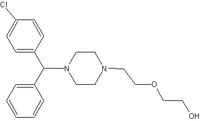WASHINGTON -- The challenge of managing postoperative nausea and vomiting in outpatient gynecologic surgical patients includes identifying predictive risk factors in patients and combining antiemetic medications to minimize their side effects, Dr. Luis Sanz said at an ob.gyn. meeting sponsored by Georgetown University Hospital.
About 40%-75% of all lower abdominal gynecologic procedures are associated with postoperative nausea and vomiting, which can lead to problems ranging from aspiration and wound dehiscence to electrolyte imbalances and hospital admissions, said Dr. Sanz, professor and vice-chairman of obstetrics and gynecology at Georgetown University in Washington.
"It is up to us to find key predictive risk factors" for postoperative nausea and vomiting and to consult with the anesthesiologist before surgery to address them, he said. The choice of preanesthetic medications, anesthetic drugs and techniques, and postoperative pain management can help reduce the risk for these outcomes. Antiemetic agents can be used to effectively minimize risk postoperatively. Replacement of fluid volume is also critical, he added.
Lower abdominal surgical procedures that involve more peritoneal manipulation are associated with a greater incidence of nausea and vomiting. Hypovolemia and pain also have "powerful" emetic effects, he added.
Other patient-related risk factors that can be identified during the preoperative office visit include a history of motion sickness or postoperative nausea and vomiting, and a history of nausea and vomiting related to use of oral contraceptives that contain estrogen. Younger age, nonsmoker status, obesity, and anxiety are other risk factors.
Postoperative risk factors include early ambulation, postoperative pain management with opioids, and premature oral intake. While most of the available antiemetic agents are effective, their use can be limited by side effects, Dr. Sanz continued.
To improve the effectiveness of antiemetic therapy, physicians can combine antiemetic medications that act on different receptor sites and have different side effects, instead of increasing the dose of one antiemetic at the expense of increasing a side effect, such as sedation.
Side effects of anticholinergics include sedation and dry mouth. Scopolamine patches take about 4 hours to have an antiemetic effect after application, but the effect can last for 3 days. Antihistamines, such as hydroxyzine (Vistaril, Atarax) and diphenhydramine, also cause sedation. Hydroxyzine can be given before surgery, and may be helpful for a patient with a history of vertigo or motion sickness.
Metoclopramide, a benzamide marketed in the U.S. as Reglan, Octamide, and Metaclopramide Intensol, increases lower esophageal sphincter tone and enhances small bowel activity, which is one objective after abdominal surgery. It's short-acting, with an effect that lasts about 1-3 hours. When used intravenously along with an epidural, it reduces postoperative nausea and vomiting. Benzamides work well for people with GERD (gastroesophageal reflux disease) and gastroparesis, but can lead to restlessness, sedation, and extrapyramidal effects.
Unlike other antiemetics, the 5-H[T.sub.3] receptor antagonists--dolasetron, granisetron, and ondansetron--are not sedating, but can be associated with headaches and dizziness. They are available in intravenous and oral formulations, and one 5-H[T.sub.3] antagonist, ondansetron (Zofran), is also available in liquid and an orally-disintegrating tablet formulations.
While effective, phenothiazines cause sedation, hypotension, and other side effects, he said, pointing out that prochlorperazine (Compazine) is not widely used because it is highly sedating. Promethazine (Phenergan) is frequently used as an antiemetic, but is also sedating.
Butyrophenones, which also work on the dopamine receptors, cause sedation as well as restlessness. Selected butyrophenones used after surgery to address postoperative nausea and vomiting include droperidol, which he referred to as "the Bendectin of anesthesiologists." Droperidol is a powerful antiemetic, with sedative and extrapyramidal side effects. It carries a black box warning that QT prolongation and serious arrhythmias, such as torsades de pointes, have been associated with its use, and that ECG monitoring should be performed before treatment and continued for 2-3 hours after completing treatment to monitor for arrhythmias.
Combining antiemetics that act on different receptor sites may result in improved efficacy, so instead of increasing the dose of 25 mg of Phenergan (promethazine) or 8 mg of ondansetron, for example, another antiemetic agent that works on different emetic receptors can be added to improve efficacy, Dr. Sanz said.
5-H[T.sub.3] antagonists do not act on dopamine receptors and when combined with other antiemetics have been proven effective.
Adding a single dose of dexamethasone to granisetron also can be effective, he said, noting that the single steroid dose does not interfere with wound healing or increase infection risk. He cited a 1999 published study of women who had had a cesarean section and were given 3 mg of granisetron with either placebo or an 8-mg dose of dexamethasone after the cord was clamped: Of those on granisetron and placebo, 85% had no vomiting episodes or needed another antiemetic within the first 24 hours of surgery, compared with 98% of those given granisetron with dexamethasone. The same result can be obtained by using ondansetron.
COX-2 inhibitors taken before surgery and then regularly for 2-3 days afterward minimize the amount of pain medicine needed, subsequently causing less nausea and vomiting, Dr. Sanz noted. Orthopedic surgeons have begun using COX-2 inhibitors to minimize pain without increasing the postsurgical bleeding that is usually associated with aspirin and NSAIDs.
"The use of the new antiemetics like the serotonin receptor antagonists, either alone or in combination with other antiemetics, has proved very efficient for decreasing the postsurgical nausea and vomiting that can prevent the patient from leaving the hospital, inconveniencing the patient and increasing the cost of medical care," he said in an interview. "Ondansetron can also be given easily as an oral disintegrating tablet in patients who cannot otherwise tolerate tablets. If we can minimize the discomfort of pain, nausea, and vomiting in our surgical patients, we can have more satisfied patients with fewer postsurgical complications."
BY ELIZABETH MECHCATIE
Senior Writer
COPYRIGHT 2004 International Medical News Group
COPYRIGHT 2004 Gale Group



